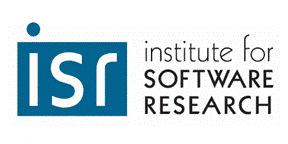
Institute for Software Research
School of Computer Science, Carnegie Mellon University
Learning User Latent Attributes on Social Media
Binxuan Huang
May 2020
Ph.D. Thesis
Societal Computing
In recent years, there is a growing interest in using social media to understand social phenomena. Researchers have demonstrated many important applications of using online social media to understand real world events, such as presidential election prediction, earthquake early detection, and disaster management. A social media site is mixed with different types of users, in terms of gender, location, ideology, and etc. Different types of users may have different motivations, different opinions towards certain topics, different resources at their disposal, different behaviors in events. If researchers want to understand what is happening on a social media site, it is important to know where a post comes from, who wrote this post, and which party the author belongs to. However, this information is not explicitly provided by users.
In this thesis, the goal is to predict users' latent attributes such as their locations, social identities, and political orientations. Thanks to the massive text data on social media, we can learn rich knowledge from text to predict users' attributes. In the meanwhile, text data from social media often comes with a significant amount of meta data. Furthermore, data from social networks also contains rich connection information, e.g. mentioning, following. It is still a challenge task to combine text, meta data, user network together for user attributes prediction.
In this thesis, I approach user attributes prediction at three levels – single post, user timeline, graph-level classification. I start with a global location prediction system that uses one single tweet as input to learn one user's location. It utilizes location-related features in a tweet, such as text and user profile metadata. I extend the tweet-level prediction system to user-level, which combines multiple posts in one user's timeline. I demonstrate the effectiveness of this model on the task of user social identity classification. An improved user-level hierarchical location prediction model is also presented. In these described models, I mainly focus on learning user attributes from users themselves. In the next step, I consider social graph as additional information to improve performance. Users connected in a social network often show similarities in certain aspects, which is a well-known phenomenon called social homophily. Experiments demonstrate that combining a social graph dramatically improves the performance of our prediction system compared to the previous user-level method. As a case study of the attributes prediction system, I apply the method on a real world emergency event – the novel coronavirus outbreak starting from 2019. I demonstrate that we gain better understanding of the public conversation during this global emergency event.
118 pages
James D. Herbsleb, Director, Institute for Software Research
Kathleen M. Carley (Chair)
Yulia Tsvetkov
Zico Kolter
Huan Liu (Arizona State University
Martial Hebert, Dean, School of Computer Science
Return to:
SCS Technical Report Collection This page maintained by [email protected]
School of Computer Science